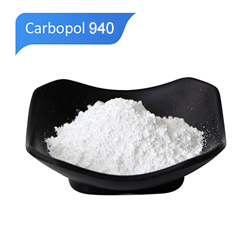In the beauty trend of pursuing fair skin, the whitening cosmetics market continues to prosper. The core of whitening cosmetics lies in their raw materials, which have unique chemical properties and physiological effects, and can help people achieve the goal of reducing pigmentation and brightening skin color. This article will explore the common skin whitening cosmetics ingredients and related content in depth.
Whitening cosmetic raw materials mainly include the following categories:
1. Antioxidant ingredients: glutathione, vitamin C and its derivatives, niacinamide and its derivatives, etc.
2. Tyrosinase inhibitors: hydroquinone, catechol, p-aminophenol, etc.
3. Reducing agents: vitamin C and its derivatives, etc.
4. Photosensitizers: vitamin C and its derivatives (including ascorbic acid).
5. Substances that inhibit tyrosinase activity: hydroquinone, salicylic acid, etc.
6. Substances that promote melanin decomposition: kojic acid, etc.
7. Other ingredients commonly used in whitening cosmetics: β-carotene (β-tocopherol), arbutin, kojic acid, ascorbic acid.
Glutathione
Glutathione, also known as GSH or GSSG, is a sulfur-containing dipeptide and the most abundant sulfur-containing amino acid in the human body. It mainly exists in the form of GST in the human body. It has strong reducing properties and is a powerful antioxidant that can effectively remove oxygen free radicals in the body and reduce the damage caused by oxygen free radicals to cell membranes and DNA. Glutathione has obvious antioxidant activity and can remove free radicals and peroxides in the body. Studies have found that glutathione has multiple biological activities such as promoting epidermal cell metabolism, inhibiting melanin synthesis and promoting collagen synthesis.
Vitamin C and its derivatives
Vitamin C, also known as ascorbic acid, is a water-soluble vitamin. Vitamin C can inhibit the activity of tyrosinase and reduce the production of melanin, thereby achieving the effect of whitening the skin. It can reduce skin pigmentation and has a certain improvement effect on pigmented skin problems such as freckles and chloasma. Due to its own limitations, its derivatives came into being, such as vitamin C ethyl ether, MAP, SAP and AA2G, which further expanded the functions and application range of vitamin C in cosmetics. The structural changes of vitamin C derivatives make them more lipophilic, making it easier to penetrate the stratum corneum of the skin and enter the deep layers of the skin to exert their effects. This enables them to more effectively deliver the effects of vitamin C to skin cells and improve their utilization rate.
Niacinamide
Niacinamide is a derivative of vitamin B3 and a water-soluble vitamin. It is used in cosmetics for whitening, anti-oxidation and anti-aging. Niacinamide cannot be synthesized in the human body and can only be ingested from food. The mechanism of action of niacinamide is to achieve the effect of whitening and lightening by inhibiting the activity of tyrosinase. Niacinamide can inhibit the activity of tyrosinase and inhibit the formation and transmission of melanin. Niacinamide can be used in conjunction with other whitening ingredients to achieve better whitening effects. When used in conjunction with other whitening ingredients, niacin and niacinamide can achieve better synergy because they are stable in the pH range of 2-9.
Arbutin
Arbutin is a natural plant pigment and one of the most widely used whitening ingredients. Arbutin has a strong reducing ability and can reduce melanin to a colorless state, achieving the effect of whitening and removing spots. At the same time, arbutin also has a strong antioxidant capacity, which can effectively prevent skin aging and lighten spots. Arbutin is the preferred ingredient in whitening products currently sold in the domestic market. However, since arbutin is easily degraded by light and ultraviolet rays, it may cause dull skin after long-term use, so it is best to do a skin test before use.
 Food Grade Sodium Hyaluronate
Food Grade Sodium Hyaluronate Cross-linked Sodium Hyaluronate
Cross-linked Sodium Hyaluronate Cosmetic Grade Sodium Hyaluronate
Cosmetic Grade Sodium Hyaluronate D-panthenol
D-panthenol γ-Polyglutamic Acid
γ-Polyglutamic Acid Allantoin
Allantoin Alpha Arbutin
Alpha Arbutin Beta Arbutin
Beta Arbutin Kojic Acid
Kojic Acid Kojic Acid Dipalmitate
Kojic Acid Dipalmitate 3-o Ethyl Ascorbic Acid
3-o Ethyl Ascorbic Acid Ascorbyl Glucoside
Ascorbyl Glucoside β-Nicotinamide Mononucleotide(NMN)
β-Nicotinamide Mononucleotide(NMN) β-Nicotinamide Mononucleotide(NMN)
β-Nicotinamide Mononucleotide(NMN) Nicotinamide Adenine Dinucleotide(NAD+)
Nicotinamide Adenine Dinucleotide(NAD+) Glutathione
Glutathione Coenzyme Q10
Coenzyme Q10 Pyrroloquinoline Quinone(PQQ)
Pyrroloquinoline Quinone(PQQ) Chondroitin Sulfate
Chondroitin Sulfate Methyl Sulfonyl Methane
Methyl Sulfonyl Methane Glucosamine Hydrochloride
Glucosamine Hydrochloride Glucosamine Sulfate Potassium Chloride
Glucosamine Sulfate Potassium Chloride N-Acetyl-D-Glucosamine
N-Acetyl-D-Glucosamine Vitamin K2
Vitamin K2
















































